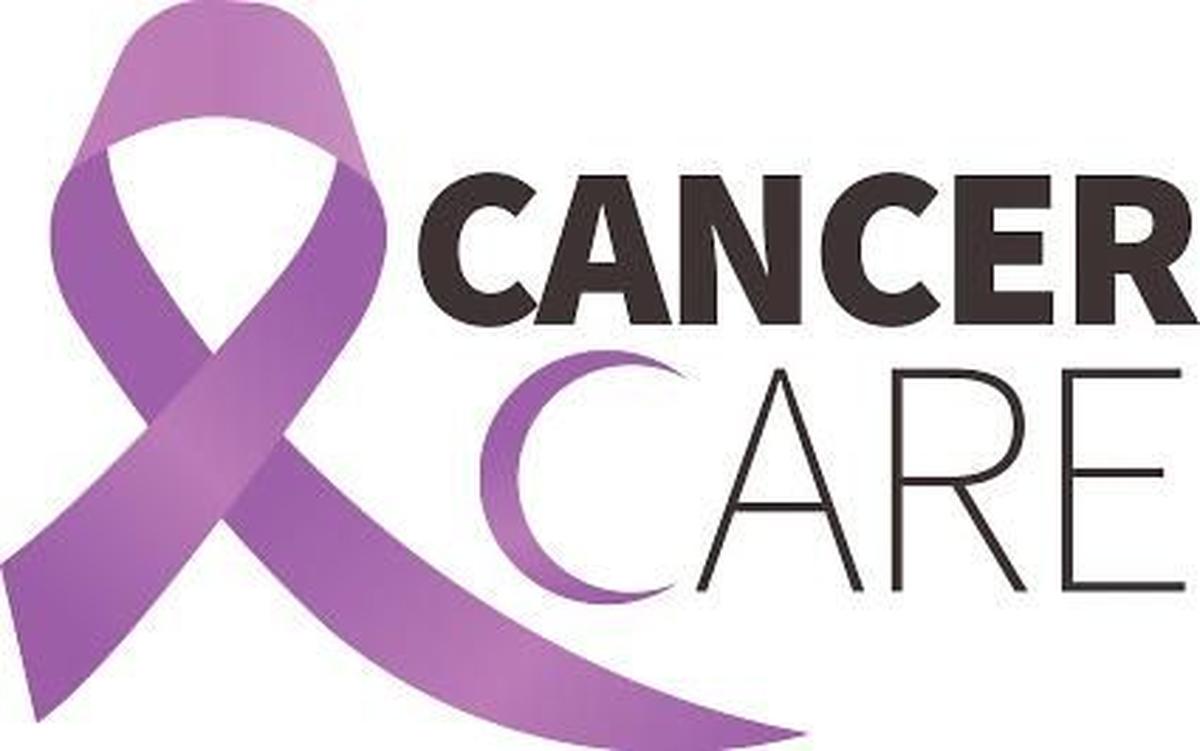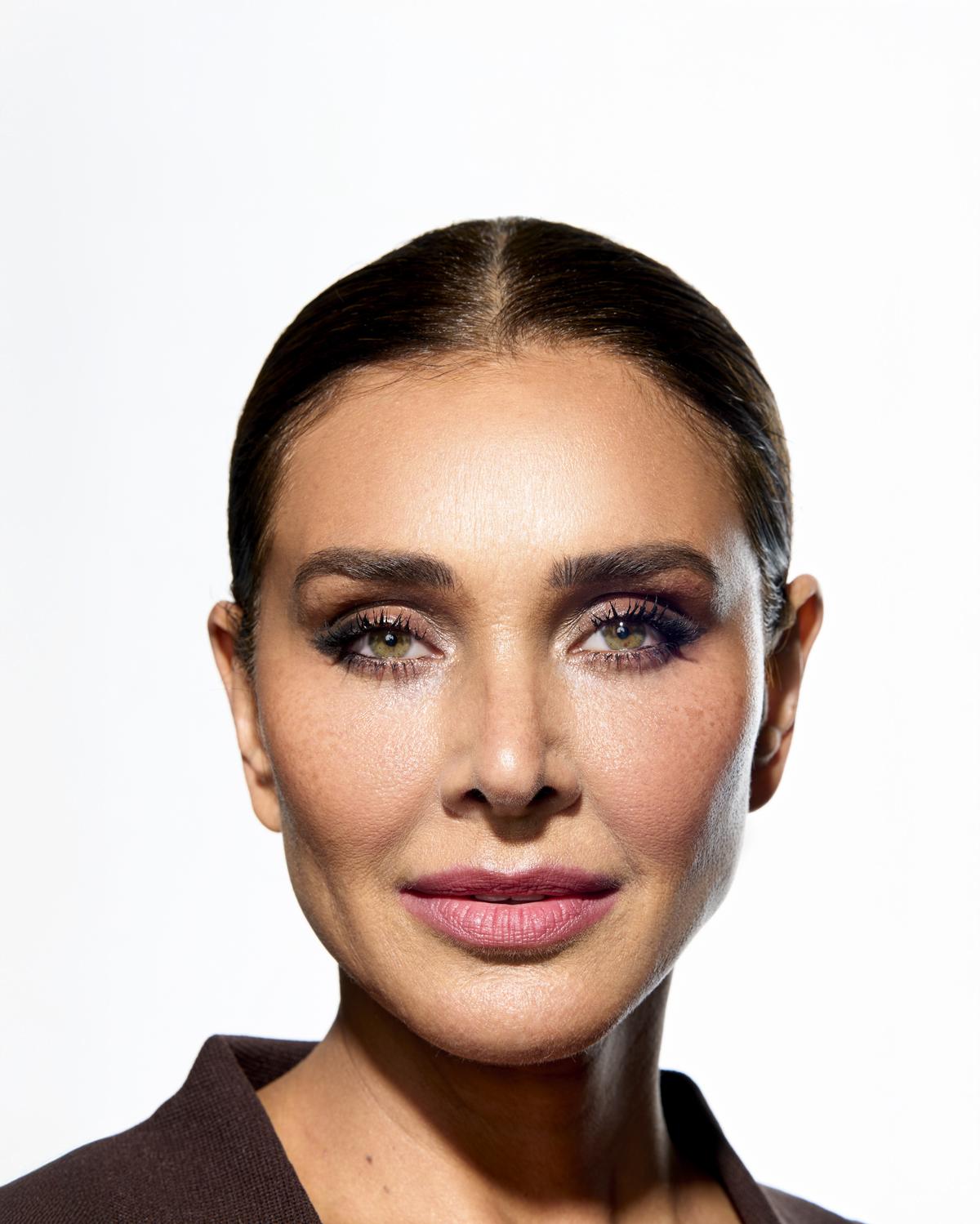It was a scenario television presenter and actor Mini Mathur had never imagined. A few years ago, she was facing an audience of almost 5,000 people, narrating a 10-minute unscripted story on stage, at the Spoken Fest in Mumbai. “About 40 seconds in, I completely blanked out. I had no idea what I was going to say next. I lost my train of thought and couldn’t remember the point of my story — nothing.”
“As a television presenter, you could wake me up in the middle of the night, hand me a mic, and I’d be ready to go. But when perimenopausal brain fog started interfering with my work — it really hit me hard”Mini MathurTelevision presenter and actor
Mathur, then 50, was appalled. She was one of India’s most seasoned, experienced television presenters with a three-decade-long career. “It gave me so much anxiety, not knowing what was coming next. I blanked out for just five to seven seconds, but on stage that felt like five hours,” she recounts.
The moment hit her hard. She started hesitating before taking on live, unscripted events for almost six months. “I was so unsure about my memory. I would write my entire script down and have it put on to a teleprompter or use cue cards. For about a year, I couldn’t function on stage without one,” says Mathur. She had never needed one earlier. “As a television presenter, you could wake me up in the middle of the night, hand me a mic, and I’d be ready to go. But when perimenopausal brain fog started interfering with my work — it really hit me hard.”
TV presenter and actor Mini Mathur
| Photo Credit:
Getty Images
Menopause is having a moment, says a recent headline in The New Yorker. If you are a 45-plus woman in India, your Instagram feed is most likely flooded with ads of mid-life fitness and menopause tips our mothers never discussed but we now happily share (ditch the coffee; get the tofu; stock up on magnesium; sign up for strength training; and so on, depending on your algorithm). Celebrities, from Gwyneth Paltrow to Oprah Winfrey, former news anchor Tamsen Fadal, and actor Naomi Watts, have all written books or spoken extensively about it.
Menopause care is now a booming business. According to Grand View Research, the menopause market in India is expected to reach a projected revenue of $1,632.2 million by 2030.

““I wanted to normalise this new version of myself, but I didn’t have the knowledge or tools to do so. One day, I finally stopped and said, I’ve conquered cancer; now let me conquer menopause! Being in denial was getting me nowhere. Now that I have embraced this stage, I have uncovered valuable insights about myself and I have never felt better.”Lisa RayActor, author and supermodel
Actor, author and supermodel Lisa Ray, who went into a medically induced menopause at 37 after a treatment for multiple myeloma, is vocal about her experience. While it took her time to confront the changes menopause brought, like Mathur, she has become a strong menopause advocate, using her social media to do explainers on midlife, women’s health, emotions and self-love.
Ray noticed a change in her appearance (thinning hair, lack of energy and focus) after a cancer relapse in 2013. “I wanted to normalise this new version of myself, but I didn’t have the knowledge or tools to do so. One day, I finally stopped and said, I’ve conquered cancer; now let me conquer menopause! Being in denial was getting me nowhere. Now that I have embraced this stage, I have uncovered valuable insights about myself and I have never felt better.”
How Lisa Ray manages symptoms
• Acceptance is key
• Consult a good doctor to discuss care and treatment, if needed
• Add more protein to your daily intake and consult a clinical dietician on supplements
• Do weight training
• Sleep is non-negotiable as is doing activities that help regulate sleep, such as meditation at night, journaling, magnesium creams or supplements
Workplace support
With over one billion women globally — including nearly 150 million in India — experiencing menopause in 2025, workplace support is crucial. The transition begins even earlier for Indian women, around the age of 46, possibly due to factors such as geography, socio-economic status and lifestyle, among others, says a study by the Indian Menopause Society. Even a casual chat reveals struggles with concentration, anxiety, brain fog and irritability among women who often have a full plate, with a demanding job, teenaged children, caregiving responsibilities and their own bodily changes.
Despite the scale of this demographic change, most Indian workplaces lack formal mechanisms to support women during this transition. Some companies have initiated wellness programmes and medical support, but stigma and lack of awareness remain barriers to an equitable workplace.

“The fear of menopause is often worse than the reality. Yes, the hot flashes are real, and sleep becomes so erratic you worry you’ll never get a full night’s rest again. But my generation of women is entering this phase on our own terms. I do strength training three times a week; I am more mindful of what I eat and I find my fitness levels are better than ever before. I’ve realised that the menopause conversation having gone mainstream is a big support to women today. We know what to expect and how to tackle it. Basically, menopause may be the end of the period but it’s not a full stop for you as a woman. It’s a comma. And we’re not done telling our story.”Shunali Khullar ShroffCo-founder of ‘Not Your Aunty’ podcast
Global take
• In the U.K., the Labour Party has pledged that, if elected, it will mandate large companies to publish menopause action plans.
• In Europe, the fashion industry has begun to address menopause-related challenges, with companies such as Asos and Burberry implementing supportive measures.
• The Indian government acknowledges the absence of a menopause policy for women employees. The Ministry of Women and Child Development says that strong research is needed to draft such a policy.
Ray saw the changes impacting her work. “I do different sorts of work — not just in front of the camera. I give public talks, I wrote a book, I read and research a lot, and my inability to focus impacted all that. I even found myself forgetting common words. Even when I would drop menopause in casual conversations at work — in a humorous way, to gauge the room — it would be met with awkward silence,” she says.
A March 2025 Stanford study called ‘The Menopause Penalty’, conducted among Swedish and Norwegian women, found that those with menopause-related symptoms earned 10% less because they cut back on their hours or quit work. In India, a survey by healthcare firm Abbott in partnership with research and data company Ipsos, among 1,200 women, revealed that 81% women felt menopause affected their work life.
Bengaluru’s Chaitra Vedullapalli, 52, entrepreneur and president of Women In Cloud — a community-led $1 billion economic access initiative for women innovators in technology — knows first-hand the challenges women face balancing leadership, well-being, and career. After years battling perimenopause symptoms, she openly shares her journey of managing executive functioning — what she describes as the ability to manage oneself and one’s resources effectively to achieve personal and professional goals.
Vedullapalli faced stress, burnout, brain fog, and memory challenges, all of which impacted her ability to lead and parent at her usual high level. “I would forget things, so I started documenting everything because I felt like I was losing my mind,” she recalls. These struggles, compounded by chronic fatigue and cognitive shifts, forced her to rethink how she prioritised self-care, leadership responsibilities, and personal health.
Chaitra Vedullapalli, entrepreneur and president of Women In Cloud — a community-led economic access initiative for women innovators in technology.
Challenges of transition
Cheryl S., 48, vice-president at a multinational technology company in Pune, has been struggling with sleepless nights. “I’m on the run from the moment I’m up — packing off children to school, instructing the house help, sorting my day — and all I can think of is how little I’ve slept. I struggle to focus during morning work calls that I often lead. I’m also getting irritable very quickly, and it’s something I need to consciously watch with my team. I’m often tempted to leave it all and sit at home if I could,” she says.
Obstetrician and gynaecologist Nina Mansukhani has come across such challenges often. The template is often similar. “This period coincides with women holding senior positions in the workplace and making important decisions. As a result, the transition can become mentally, physically, and emotionally exhausting. Women may find that their tolerance for mistakes diminishes, and their capacity to handle errors decreases.”
Dr. Mansukhani says sleep deprivation can shorten one’s patience. “Essentially, the capacity to manage errors and mistakes, as well as responsibilities at the managerial level, becomes reduced. Many women tell me that they feel like they are losing control frequently, and this experience is something we all encounter at some point.”
Finding the right work-life balance during this time is crucial, says Dr. Nina Mansukhani, obstetrician and gynaecologist
• Start with lifestyle changes such as diet, exercise, and building small, consistent routines.
• Seek support through therapy, whether with a life coach or a cognitive behavioural therapist
• Take short holidays, or attend healing courses for some much-needed relief
• If menopause symptoms significantly strain daily life, menopause hormone therapy (MHT) might be recommended. When carefully selected and used for a short period (under medical supervision), MHT is extremely safe and can dramatically improve relationships, work dynamics, and overall quality of life.
Taboos persist
Menopause discussions are now gaining traction in workplaces globally. Across the U.S., U.K., and Europe, legislative discussions, policy proposals, and corporate initiatives are addressing the issue. In India, a few forward-thinking companies are taking action.
Standard Chartered Bank is one of them. They partnered with the Financial Services Skills Commission in the U.K. five years ago to understand the impact of menopause on career and talent retention. “Learnings from this have been applied across countries, including India,” says Shivshanker S.V., India and South Asia Head of Human Resources at Standard Chartered Bank.
A signatory to the ‘Wellbeing of Women’s Menopause Workplace Pledge’ and a member of the ‘Menopause Friendly Employer’ organisation, the bank provides counselling and full medical coverage for menopause-related consultations for employees and their partners.
“We take a data-led approach to better understand the challenges. Specific initiatives include wellness resources, flexible work arrangements, awareness sessions with gynaecologists, manager training, and a closed-group ‘Lean-In Circle’ for open conversations,” says Shivshanker.
Shanti Kurupati, Director of Product Development at Intuit
Bengaluru-based Shanti Kurupati, Director of Product Development at Intuit, a global software company, thinks the key is in building inclusive environments that enable fearless sharing. At Intuit, this is done through internal communities such as Tech Women at Intuit (TWI) that create safe spaces for discussing sensitive topics such as menopause. Talks with specialists further help normalise conversations, says Kurupati.
Intuit’s ‘Well-being for Life programme’ provides ₹60,000 annually for physical or mental wellness. Employees can access Maven, a 24/7 digital health platform offering menopause support. It’s anonymous and extends to employees’ dependants, too.
But many women still feel uncomfortable and fear ageism may rear its head. Shuja, 49, works in a Pune-based boutique travel firm, and often accompanies clients on day trips near the city. “My gut health has suffered, I urinate frequently and I’m finding it tough to be out the whole day.” But she would rather endure the discomfort than speak to her boss, fearing reduced responsibilities. “They’ll start viewing me as an old lady,” she laughs.
Kurupati acknowledges this fear of losing out, across a woman’s life phases — from childbirth to menopause. She thinks sharing experiences resonates with people and ally-ship between women is important. “Intuit’s initiatives aren’t just policies — they are born from the lived experiences of senior women who’ve gone through these life transitions.”
Stage of change
Perimenopause is the phase where periods haven’t completely stopped, but hormonal changes have begun. It typically lasts two to four years before menopause — marked by 12 consecutive months without a period. During perimenopause, oestrogen levels gradually decline, causing hot flashes — sudden spells of intense heat in the face, neck, and upper body — as the brain’s temperature regulation gets affected. Irregular periods and a slowing metabolism are other early signs of approaching menopause, says Dr. Nina Mansukhani.
A recent Women In Cloud survey (Feb-March 2025) of more than 1,000 respondents found that over 60% of women experience cognitive, mood, and stress management challenges — yet few receive targeted care. Only 25% of those seeking medical help for hormonal or stress-related concerns received an accurate diagnosis and treatment, largely due to gaps in healthcare system preparedness. Vedullapalli sees this as a call to action.
“If we want to empower women as innovators, executives, and changemakers, we must address the full ecosystem of support — skills development, economic access, health, and wellness readiness,” she says.
Armed with information
When she first started reading about menopause, Mathur asked her mother when she had gone through it. Her mum’s reply — “maybe at 45, maybe 55” — made her realise how little the older generation understood or catalogued it. When she probed further, her mother admitted not fully understanding what she was going through. “Nobody was sensitive enough to notice how women of her generation felt.”
Even today, Vedullapalli points out, awareness and sensitivity around women’s health challenges is lacking. Early on, many healthcare providers dismissed her symptoms, advising more exercise or stress management without addressing the underlying hormonal shifts. Some even suggested her challenges were psychological rather than physiological.
After finally receiving a clear diagnosis, Vedullapalli took a proactive approach: embracing a holistic lifestyle that included hormone therapy, inflammation-reducing supplements, metabolic and hormonal tracking, and prioritising restorative habits. “I’m fanatic about my eight hours of sleep,” she says.
Women’s health is so under-served, Ray notes. “From the research to finding the best informed doctors, it’s a journey.” It’s probably the reason women are coming together to create platforms, groups and resources that demystify menopause.
Menopause coach Juilee Dandekar
When Juilee Dandekar entered surgical menopause at the age of 37 after battling endometriosis, she felt information could be her rescue. Her Instagram page @livefearlessofficial documents her surgical menopause journey and is a platform to share experiences and insights. “Not too many people talk about menopause, and at 37, it was overwhelming,” says Dandekar, India director for strategy and business development with a leading healthcare company. She got certified by the British Menopause School in 2021 to become a menopause coach. Dandekar believes “education is the first step” and at the moment, offers free support.
The Chennai Menopause Society (CMS) conducts public awareness sessions to help women understand menopausal symptoms and advise them on simple measures. Even incorporating a few menopause-changes at the workplace can be useful, says urogynaecologist A. Tamilselvi, member and former secretary of CMS. “Organising annual health check-ups with a gynaecologist consult is one. Employees should also be able to discuss their health issues, including mental health, without the fear of being labelled, losing their jobs or being passed up for promotions,” she says.
Urogynaecologist A. Tamilselvi, member and former secretary of Chennai Menopause Society
Struggling to find the right information around her symptoms, Mathur, now a certified women’s health coach from the National Board of Health and Wellness Coaches, took a one-and-a-half-year course in the U.S. to find credible information that could help her and other women figure out their bodies. Equipped with knowledge and certification, she is now curating a platform of resources for women over 45. She’s writing a book, planning a podcast, and even working on a documentary, aiming to connect more women to credible resources around fitness, nutrition, hormone therapy and emotional well-being.
“Ours is the first generation of women that is asking questions, refusing to suffer endlessly without solutions behind hushed or subdued narratives around women’s health and midlife,” she says.
Instead, it’s a generation determined to change the narrative — by talking, supporting each other, and refusing to stay invisible. At home and more importantly, at work.
The writer is a freelance journalist and the co-author of ‘Rethink Ageing’.
Published – May 01, 2025 05:33 pm IST




































